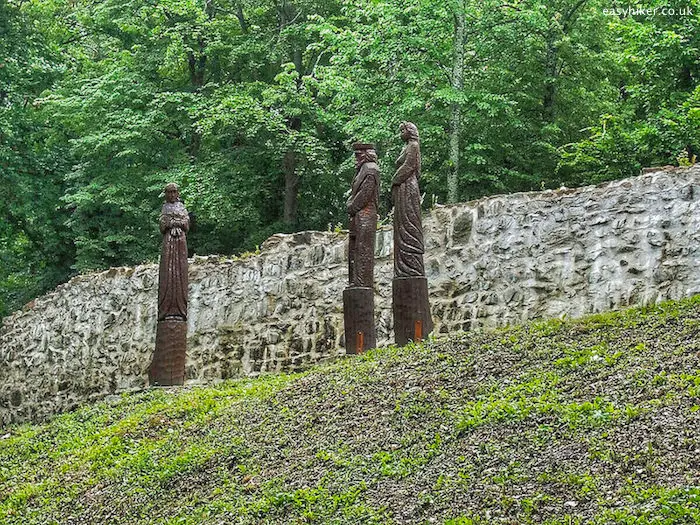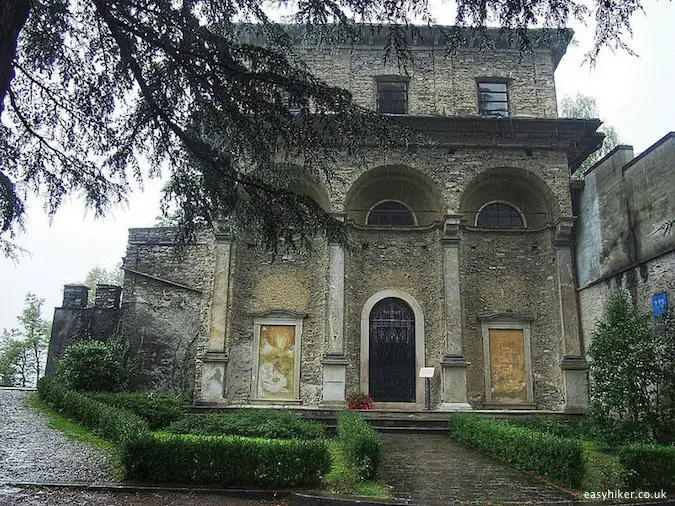If you are looking for a reliable way to date cities, here is one clue: look at the churches: If the town centre is studded with churches that look somehow Gothic but not quite (“Neo-Gothic”: overcooked in parts, half-raw in others), then the city in question is mainly a child of the 19th century.
If you spot many truly Gothic churches, then the city is high or late medieval in origin. But only the oldest cities – those that can trace back their history to the first millennium AD – have at least one church in the ancient, bottom-heavy style that we today call Romanesque.
The city of Osnabrück in the German province of Lower Saxony, perhaps surprisingly so, belongs to this latter category.

I say “surprisingly” because Osnabrück, at first sight, is a rather modern town, with a largely functional layout and post-WWII architecture.
But in the town centre, you will also find streets that appear to breathe history …

… as well as passages full of attractive old buildings …
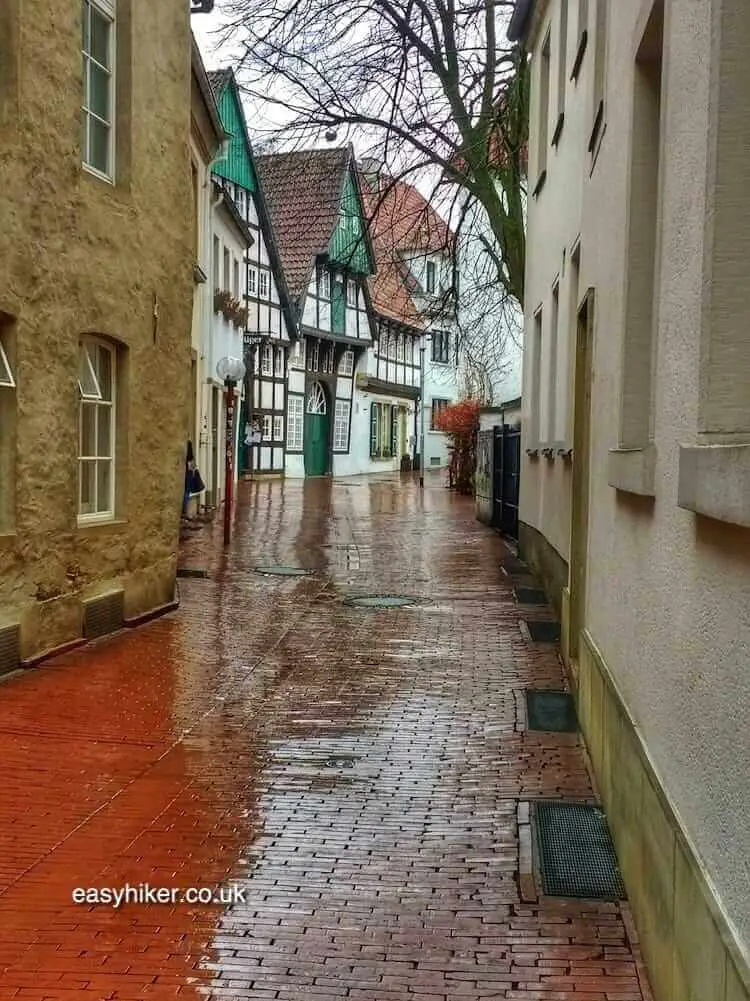
… that, occasionally, seem to communicate in interesting ways with the new world around them.
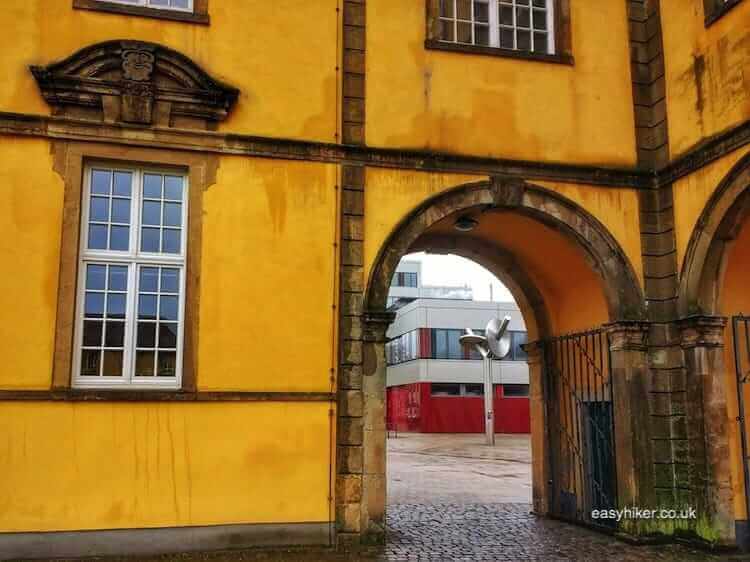
It also may pay to look twice. Most of the time, what looks old really is old …
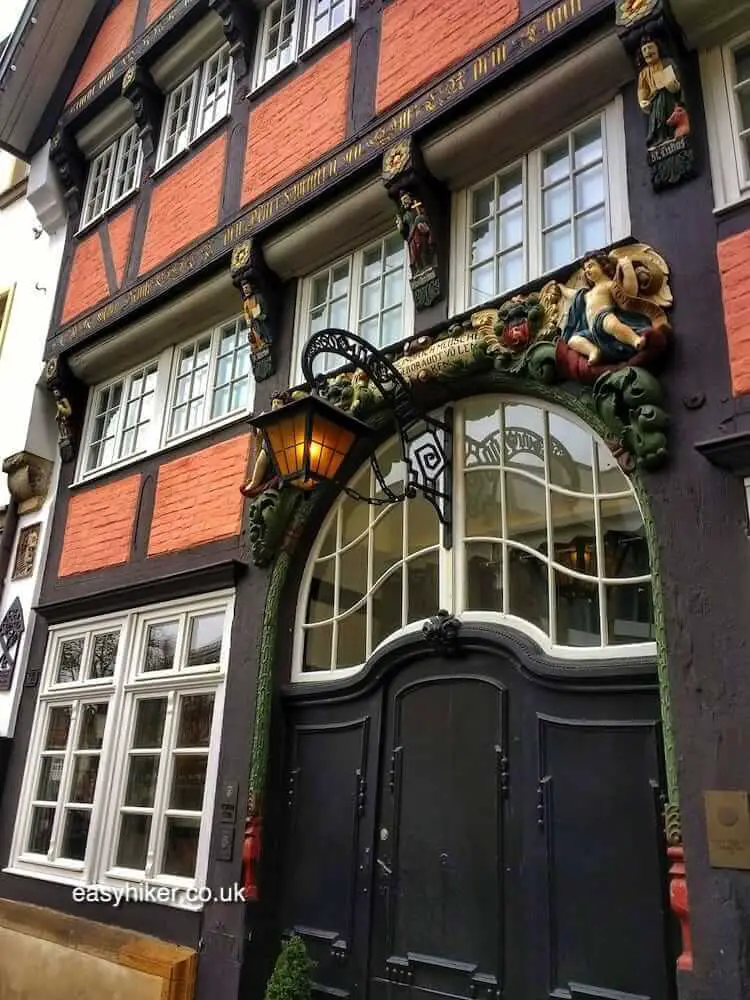
… but sometimes, it can also be a modern take on old motifs. Take, for example, this house front …
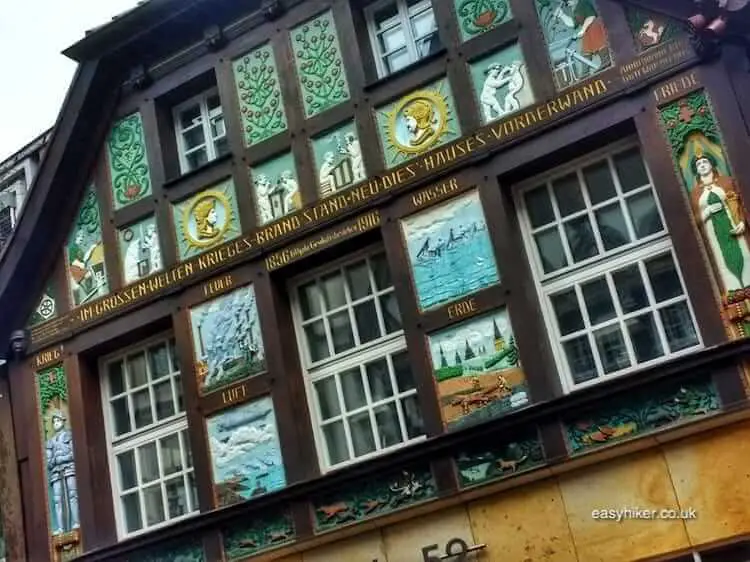
… which, as closer study reveals, was only created in 1916 in the middle of the “raging fires from the Great Global War”.
If you have a couple of hours to kill in Osnabrück, we recommend to leave the old town for last and start with a bit of green. Out of the train station, walk into Heinrich-Heine-Strasse and then turn right into Haseuferweg.
This footpath past the river Hase, which flows right through Osnabrück’s town centre, is pretty and scenic, …
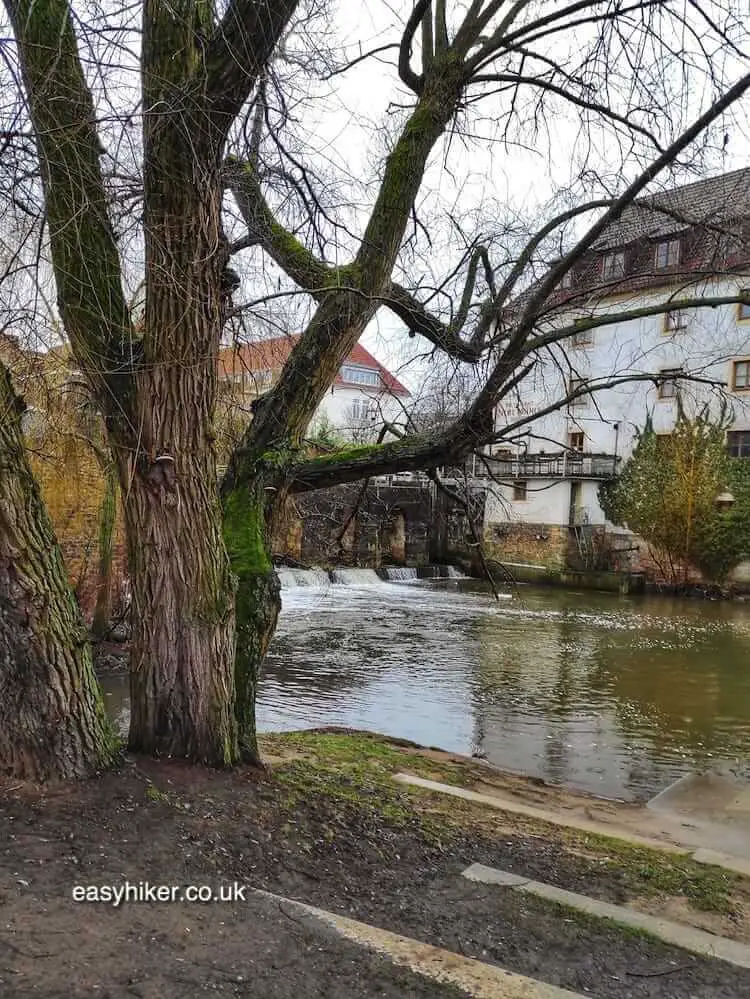
… although even here, the city never tries to hide away its modern urban heritage.

When you see the massive Church of the Holy Heart (a good example, by the way, for the Neo-Gothic style we spoke about earlier) …
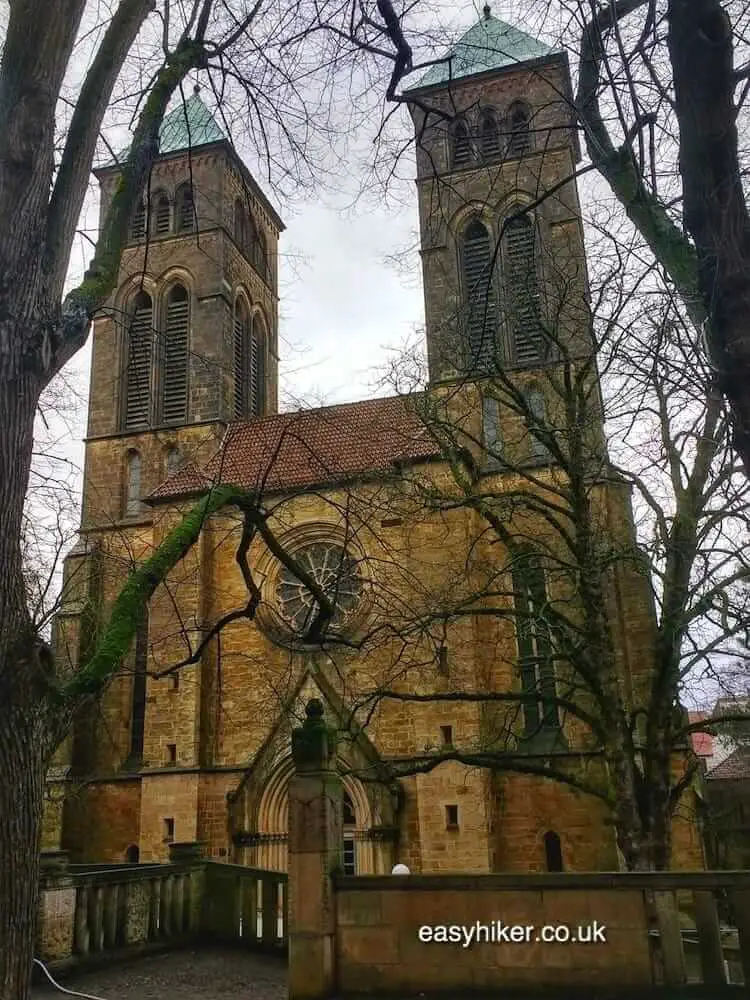
… the most picturesque section of this trail lies ahead of you.
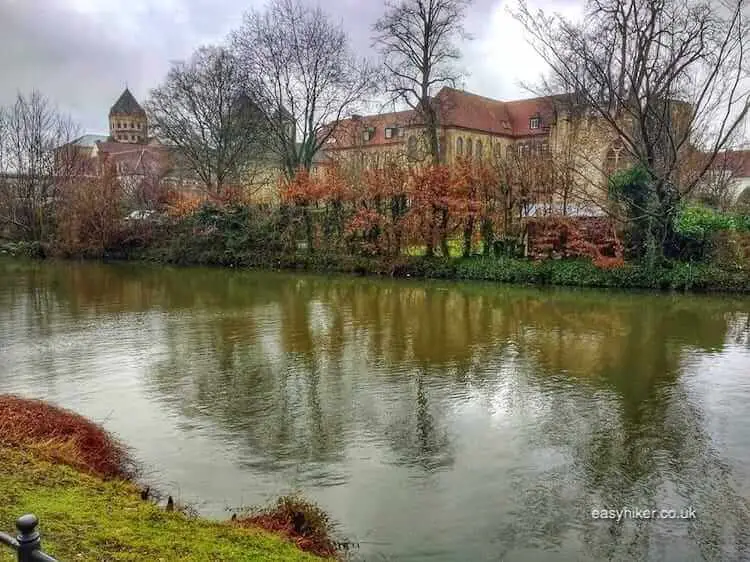
This riverside path behind the Church of the Holy Heart also has a place in world literature: In his novel All Quiet on the Western Front (recently adapted into a multi-Oscar-nominated film), Erich Maria Remarque – Osnabrück’s most famous son – sends his protagonist Paul Bäumer here to experience the contrast between a peaceful provincial town and the life in the trenches of WWI from where he hast just returned.
The novel specifically mentions the washerwomen who used to ply their trade on the banks of the Hase near the old Pernickel Mill.
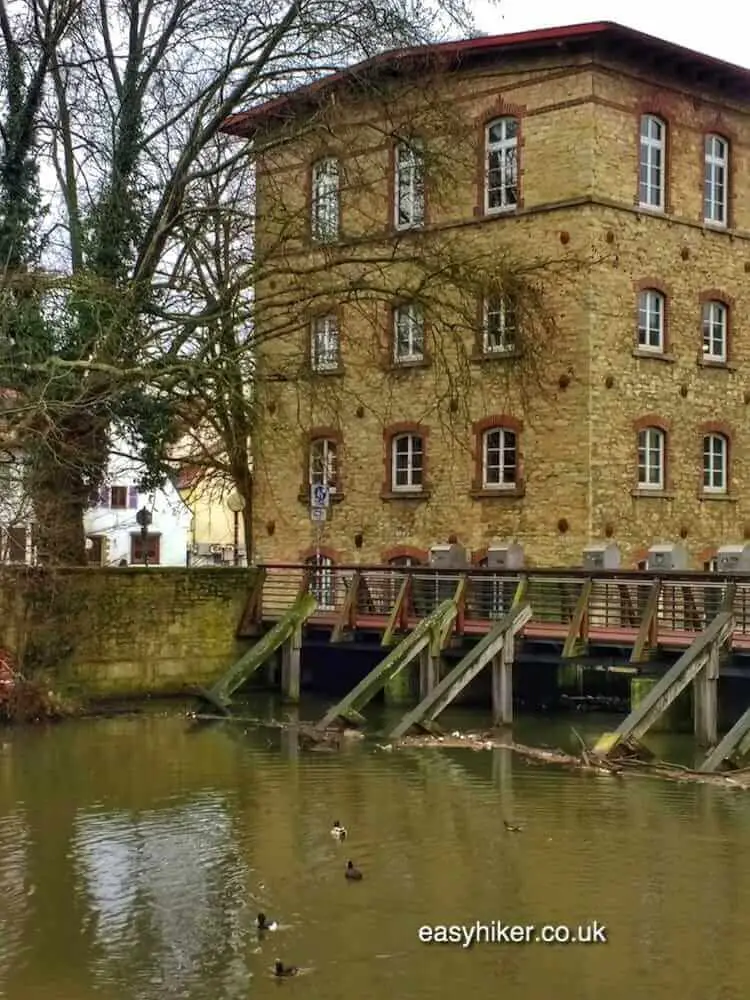
Remarque left Germany in the 1930s for the USA. He lived for many years in Hollywood where he had affairs with movie stars such as Marlene Dietrich and Greta Garbo and where his later novel Arch of Triumph (featuring Ingrid Bergman and Charles Boyer) was turned into a big-budget movie. Not bad for a boy from provincial Germany who seemed destined for a career as an elementary school teacher.
Remarque quite frequently used places from his home town for scenes in his books but rarely mentioned Osnabrück by name (he did not do so in All Quiet on the Western Front either), but this stretch down the river Hase is nevertheless easily recognizable.
Remarque knew this riverside path particularly well: for several years, he came here every day on his way to and from school.
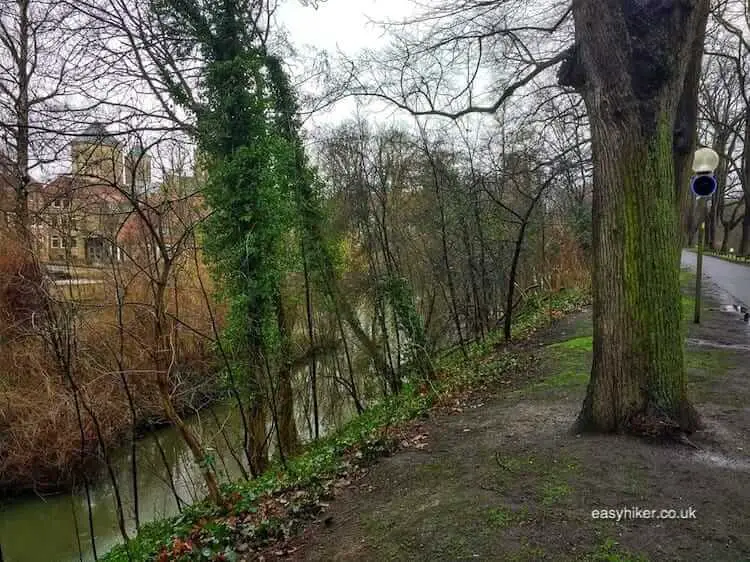
Use the bridge in front of the Pernickel Mill to turn left: this is the perfect spot to start your exploration of the historic old town.
Do not miss the place where world history was actually written in Osnabrück: this is the ancient City Hall, where – during the peace negotiations for the Thirty Years War between 1643 and 1648 – the foundations were laid for the modern world order of sovereign states.
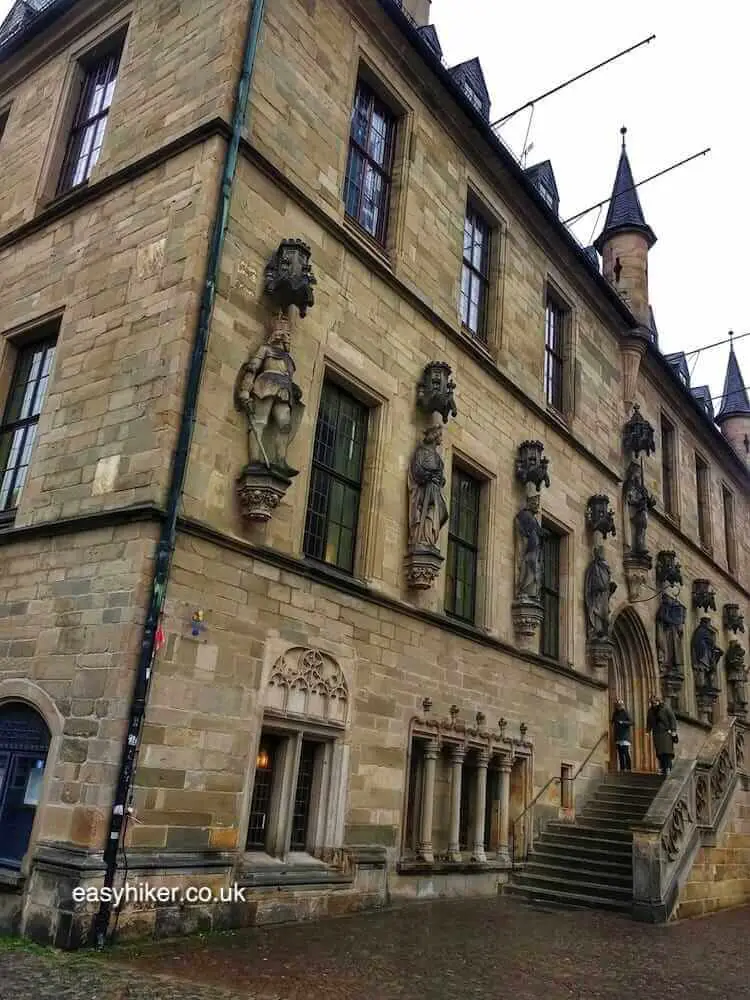
Osnabrück may lie a little off the German Tourist Trail which appears to include little but Berlin, the castles on the Rhine and the Black Forest. We came here first after a hike in the near-by Teutoburg Forest on a day when the weather was even more awful than during our most recent visit (with violent hail showers replacing persistent rain) but liked it so much that we vowed to return to take a closer look under more benevolent circumstances.
Return we eventually did and, despite the winterly conditions, did not regret it. There is, after all, a lot to see in Osnabrück.


